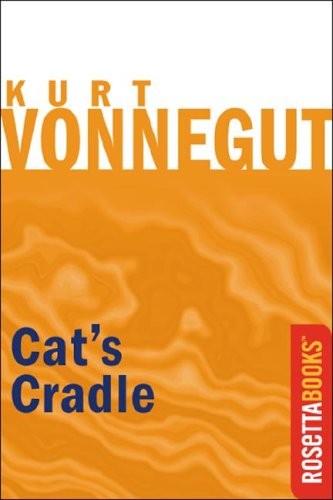eBook
English language
Published Dec. 4, 2010 by RosettaBooks.

eBook
English language
Published Dec. 4, 2010 by RosettaBooks.
If any single novel of Kurt Vonnegut's can represent his unique voice and freewheeling imagination, it is probably the wildly funny and provocative Cat's Cradle, published in 1963. Though it might not be his most substantial or popular novel, Cat's Cradle is a perfect vehicle for his idiosyncratic style and his kaleidoscopic view of the modern world.The story unfolds from the point of view of a narrator, who, in preparing to write a book, wants to know what some famous Americans were up to the day the atomic bomb was dropped on Hiroshima. He learns that, on that very day, Dr. Felix Hoenikker—an absent-minded professor who was the erstwhile "father of the atomic bomb"—was uncharacteristically playing with string, making a cat's cradle and terrifying his young son by showing the boy his creation and speaking to him for the first time. Years later, the grown-up Hoenikker children are the key …
If any single novel of Kurt Vonnegut's can represent his unique voice and freewheeling imagination, it is probably the wildly funny and provocative Cat's Cradle, published in 1963. Though it might not be his most substantial or popular novel, Cat's Cradle is a perfect vehicle for his idiosyncratic style and his kaleidoscopic view of the modern world.The story unfolds from the point of view of a narrator, who, in preparing to write a book, wants to know what some famous Americans were up to the day the atomic bomb was dropped on Hiroshima. He learns that, on that very day, Dr. Felix Hoenikker—an absent-minded professor who was the erstwhile "father of the atomic bomb"—was uncharacteristically playing with string, making a cat's cradle and terrifying his young son by showing the boy his creation and speaking to him for the first time. Years later, the grown-up Hoenikker children are the key to what follows, possessing as they do the only example of their father's last discovery, a potentially destructive kind of super-ice called "ice-nine." Cat's Cradle is a wild, hurtling apocalyptic tale that satirizes, among many other things, the blithe indifference and goofiness of the people who populate the nuclear science community. The story travels from the home turf of Vonnegut's imagination—Ilium, N.Y.—to a Caribbean banana republic where an illicit religion called Bokononism is practiced, as a sense of doom (in the form of ice-nine) overtakes mankind. The New York Times perhaps said it best in describing Cat's Cradle as "a freewheeling vehicle ... an unforgettable ride."